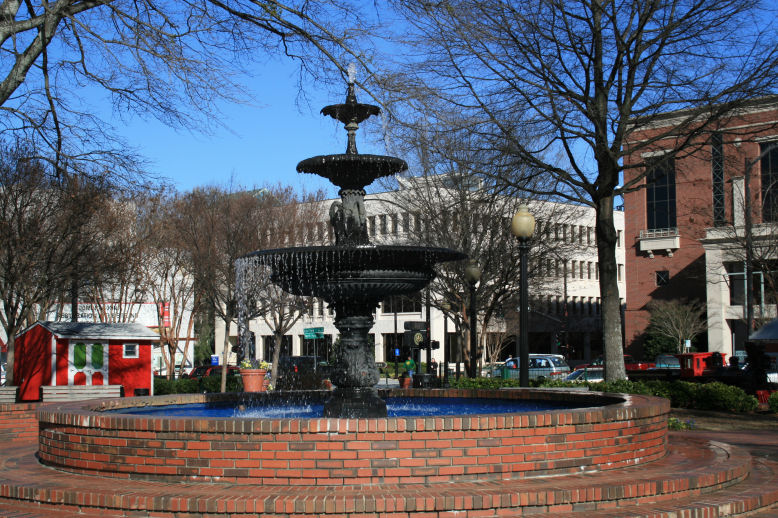Last month, we questioned why people weren’t paying more attention to Marietta, the Atlanta suburb that is tearing down 1,300 apartments and permanently displacing their low-income residents. We wondered why this large-scale displacement of poor households—most of whom are black or Latino—didn’t generate the same kind of outcry as much more ambiguous situations in urban settings that are criticized as heartless examples of gentrification.
Our commentary generated press coverage in the local Marietta Daily Journal. Reporters for the Daily Journal put our critique to local Councilman Grif Chalfant. Chalfant defended the plan, saying that by demolishing the Franklin Road apartments, the city was dispersing a high-poverty neighborhood. He compared Marietta’s demolition of those homes to the razing of public housing in Atlanta, Chicago, and elsewhere. Of course, the Franklin Road apartments weren’t public housing—they were private homes purchased by the city. And there was still no indication of whether or how their residents would be given relocation assistance, or if they would simply end up in another low-income neighborhood further away.

In our original commentary, we conjectured that there’s been a widespread internalization of the notion that suburbs are white and wealthy, and city centers are for people of color and the poor—and that anything that changes this arrangement is a violation of the natural order of things. While that is certainly true, in a sense, it’s unfair to single out Marietta. Ironically, this city found itself with a concentration of affordable housing—and lower income families—largely because it failed to to be as effective at exclusionary zoning as are most suburbs. When suburbs ban or greatly restrict apartment construction, there’s little chance of becoming another Marietta. The more common and more daunting example of suburban exclusivity may the be places that never have any affordable housing.
Consider Marin County, a supposedly liberal part of Northern California where well-to-do local residents have reacted with great alarm that Star Wars director George Lucas is planning on building 224 units of affordable housing on land he owns. (And keep in mind that in this upscale Bay Area suburb, “affordable” means housing for households with annual incomes between $65,000 and $100,000 per year.) Thanks to exclusionary zoning and other measures, Marin County has very little affordable housing of any kind, and is now enthusiastically opposing the small amount they might get. Something similar happened in Darien, Connecticut, when a local couple tried to develop affordable housing in a wealthy suburb.
Neither Marin County nor Darien are planning to tear down any low-income apartments like Marietta is—but perhaps only because they’ve been so effective at keeping out the poor that there aren’t any low-income apartments to tear down.
It may be that Marietta is the victim of two things: the large-scale Euclidean zoning that separated multi-family housing from other sections of the community, causing it to decline in value while surrounding single family neighborhoods continued to be desirable by more solidly middle-class and upper-middle-class residents. If instead of being concentrated in just one part of the community, these multi-family units had been more dispersed in mixed-use, mixed income-developments, they might have avoided the “concentrated poverty” that prompted the city to acquire and demolish them.

The second problem may be the high elasticity of the housing supply in Atlanta, and the region’s widespread sprawl. (Elasticity is the economist’s term for the ease with which new units can be added to a region’s housing stock. “High elasticity” means you can add more housing very easily.) In another metropolitan area, like San Francisco or Washington, DC, 1960s-era apartments might still command a high price, because of the very constrained housing supply. In Atlanta, where it’s relatively easy to build more housing, older apartments can “filter” down market faster—leading to the kind of rapid increase in poverty seen in Marietta. It may be that displacement is less an issue in the Atlanta area than in other metros because new housing is so readily constructed.
Still left unanswered are the fiscal “beggar thy neighbor” qualities of this policy decision. Marietta officials are quite candid that lowering their city’s costs for schools and public safety expenditures are a key motivation for undertaking the demolitions. And while Marietta may shed these costs, it is certain that at least the cost of educating the children displaced from these apartments will be shifted to other school districts.
But for every Marietta that takes the visible step of demolishing some aging apartments that have moved down market, there are dozens (or perhaps hundreds) of other suburbs that never allowed multi-family housing to be built in significant numbers in the first place, and so precluded this question from ever being raised. And while it may be far less visible and obvious, this use of local land use controls to engineer the social and class structure of a community is no less profound in restricting the opportunities of lower income Americans.

